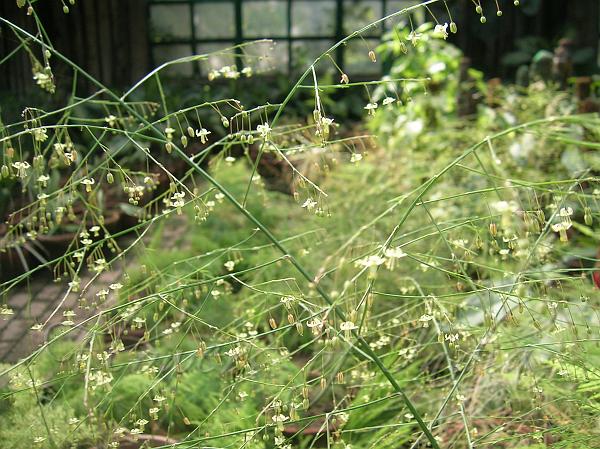|
| Garden Asparagus |
|

|

| File size | 675894 |
| Original date | 3/25/06 3:13 PM |
| Resolution | 2048 x 1536 |
| Flash | Flash did not fire, auto |
| Focal length | 5.4mm |
| Exposure time | 1/97s |
| Aperture | 2.8 |
| Focus Distance | |
| Metering Mode | Multi-segment |
| Camera make | NIKON |
| Camera model | E3700 |
| Sensor type |
|
|
|
Photo: |
Botanical name: Asparagus officinalis Family: Asparagaceae (Asparagus family)
Asparagus is believed to be native to the east Mediterranean and the Middle
East. It thrives along sandy riverbanks, shores of lakes and wet, salty
coastal areas. It is very salt tolerant. Today it grows “wild” across many
of the areas around the world where it is grown for food. Asparagus grows into
a tall upright bush. It’s hard to say what the asparagus flower means. It’s
totally discrete. Hard to see, hard to study. Flowers are small, with two
yellowish-green rings of petal-like tepals. Still, the asparagus flower is
looked fro by the bees, the asparagus being honey-bearing. The leaves of the
asparagus are even harder to define. They can’t even remind of what usually
defines a plant. The leaves barely have the shape of scales.
Medicinal uses: Vegetable eaten raw or boiled, the asparagus has
surprising medicinal properties. The asparagus is indicated in some general
illnesses like asthenia, anemia, rheumatism, diabetes as well as renal
lithiasis. It is firstly a fortifier. From the asparagus offshoots decoction,
juice, syrup and tincture are prepared. Very often used is the asparagus
juice, a preparation practically accessible to anyone.
Vegetable eaten raw or boiled, the asparagus has
surprising medicinal properties. The asparagus is indicated in some general
illnesses like asthenia, anemia, rheumatism, diabetes as well as renal
lithiasis. It is firstly a fortifier. From the asparagus offshoots decoction,
juice, syrup and tincture are prepared. Very often used is the asparagus
juice, a preparation practically accessible to anyone.
Medicinal uses:
 Vegetable eaten raw or boiled, the asparagus has
surprising medicinal properties. The asparagus is indicated in some general
illnesses like asthenia, anemia, rheumatism, diabetes as well as renal
lithiasis. It is firstly a fortifier. From the asparagus offshoots decoction,
juice, syrup and tincture are prepared. Very often used is the asparagus
juice, a preparation practically accessible to anyone.
Vegetable eaten raw or boiled, the asparagus has
surprising medicinal properties. The asparagus is indicated in some general
illnesses like asthenia, anemia, rheumatism, diabetes as well as renal
lithiasis. It is firstly a fortifier. From the asparagus offshoots decoction,
juice, syrup and tincture are prepared. Very often used is the asparagus
juice, a preparation practically accessible to anyone. | Identification credit: Navendu Pagé | Photographed in Lodhi Garden, Delhi. |
• Is this flower misidentified? If yes,